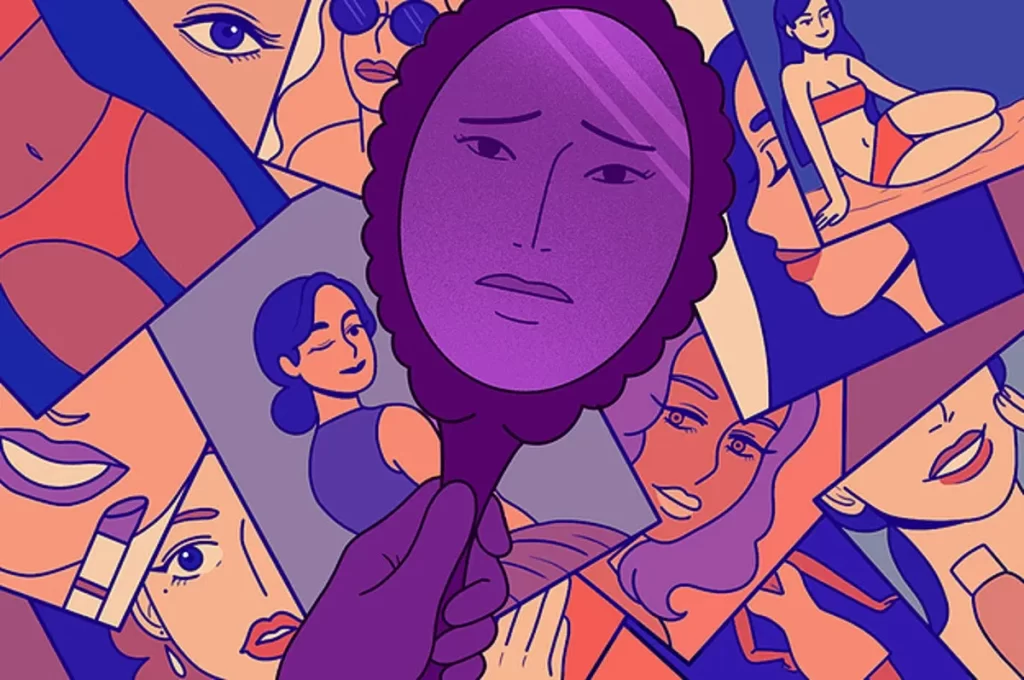Bollywood actress Sonam Kapoor busting the myth of “Celebrity Perfectionism” on Buzzfeed in 2016 impressively stirred us up as the trendy topic then.
Casually talking about having dark circles, scars, cellulite, body hair, etc. I don’t remember anyone normalizing it this beautifully and extensively before. It was indeed because Sonam herself being a sufferer of harsh beauty standards, strongly drove her to acknowledge this significant issue. In this era of unrealistic “Perfection”, it’s time to redefine beauty since none deserves to live with a negative self-perception and die “Ugly” just for not meeting societal expectations.
Being beautiful has always been equated with the “Flawless and Perfect” beauty standards as depicted by the media; especially social media and some fashion industries. Particularly women, mostly teenage girls are much more concerned when it comes to beauty. Practically speaking, it is not always possible to have a “Flawless” skin, “Perfect” facial and body features as a whole (Good genes may save but not in all ways). So voila! Beauty apps and Insta filters come in handy to look “Perfect”!
Although the trend of taking a thousand selfies making a “Pout” face is outmoded, the use of different photo editors to change facial features, skin color and body shape is still in vogue (rising actually). Evidently it is due to the addition of many “Social media influencers” in our lives after Celebrities being a root source of promoting fake beauty standards. Besides, media advertising through different photoshopped billboards and magazines, also fashion dolls like “Barbie” providing an ideology of a beautiful face and hourglass body can easily influence the youngsters (including my 13 y/o cousins!). The latest movie was far different from such concepts though.
Moreover, I would mention ”Brown culture” as a special cause of spreading rough beauty standards within us, constantly driving us to be “Perfect” since pre-teens.
Who likes being called “Fat” for gaining the minimal weight or “Dirty” for having pimples randomly by those random aunties? For the aforementioned causes, society has come to perceive some specifics like a light skin tone, small nose, big eyes, fuller lips, tall and slim figure and so on as to being beautiful AKA “Perfect”. Perhaps you can relate the fact why today’s fashion industries prefer showcasing those “Perfect” models merely based on looks rather than talents.

Now you know why you keep urging to be that “Flawless and Perfect” girl by any means. Rethink about it, what cost is it giving you? Well, I guess remaining dissatisfied with your appearance until being validated by your followers after you’ve anxiously posted some filtered pictures. On a broader span, these unhealthy beauty standards can slowly damage both one’s emotional and mental health leading to depression, anxiety, social insecurity, personality disorder, relationship problems etc. (Kholmogorova et.al, 2017). Certainly, this says a vital reason behind the arising mental health issues in this generation. Also, similar effects can be seen on the ones watching those “Perfect” pictures.
Furthermore, rising expectations about self image at a higher extent creates Narcissism in some girls; instigating into having unnecessary cosmetic surgeries, lip fillers, hair/lash extensions and what not (Walker et.al, 2021). This obviously goes like a cycle since self-expectations never end.
Nevertheless, all these rough beauty standards can put a toll on physical health too. For instance; eating disorders, anorexia etc. (which mainly leads from the mental effects like low self-worth, BDD/ Body dysmorphic disorder etc.). Talking about being influenced, Kholmogorova et.al also mentions the rise of online websites where girls share their starvation journals and encourage others to lose weight. It’s both funny and sad how putting yourselves in pain is being normalized just to look “Perfect” AKA Beautiful according to our society. There is no doubt that at the end of the day, it does nothing but cause you to lose yourself.
As said earlier about redefining beauty, I don’t think there should be any specific standards as each of our features epitomizes a uniqueness within us. To me, the so-called imperfections reveal our “Realness” which indeed defines Beauty. Real conception of beauty celebrates all skin tones and body types. It welcomes the wonderful diversity and distinctiveness of every corner of the world rather than promoting fake “Perfectionism”. Furthermore, real beauty doesn’t only imply outer appearances but also our inner confidence, passion and talent. Thus, it clearly doesn’t require you to be “Flawless” to look beautiful but strongly believing the fact that “You are beautiful” does. And it will only start with YOU to eventually change the world.
Every single Imperfection adds to your beauty. I would be imperfect than perfect- Sonam Kapoor
Although anti-shaming movements have been popular nowadays on social media, still many young girls find it hard to escape the trap of Perfectionism. To support this movement it’s highly necessary for everyone, as perfect in their own ways to- practice positivity, eat and exercise for attaining a sound health and most importantly, avoid judging/shaming others’ appearances.
In conclusion, the dark circles or scars or whatever you’re worried about today is not a flaw, rather it is a symbol of a part of your life and growth. Isn’t it another beautiful feeling to have experienced life?